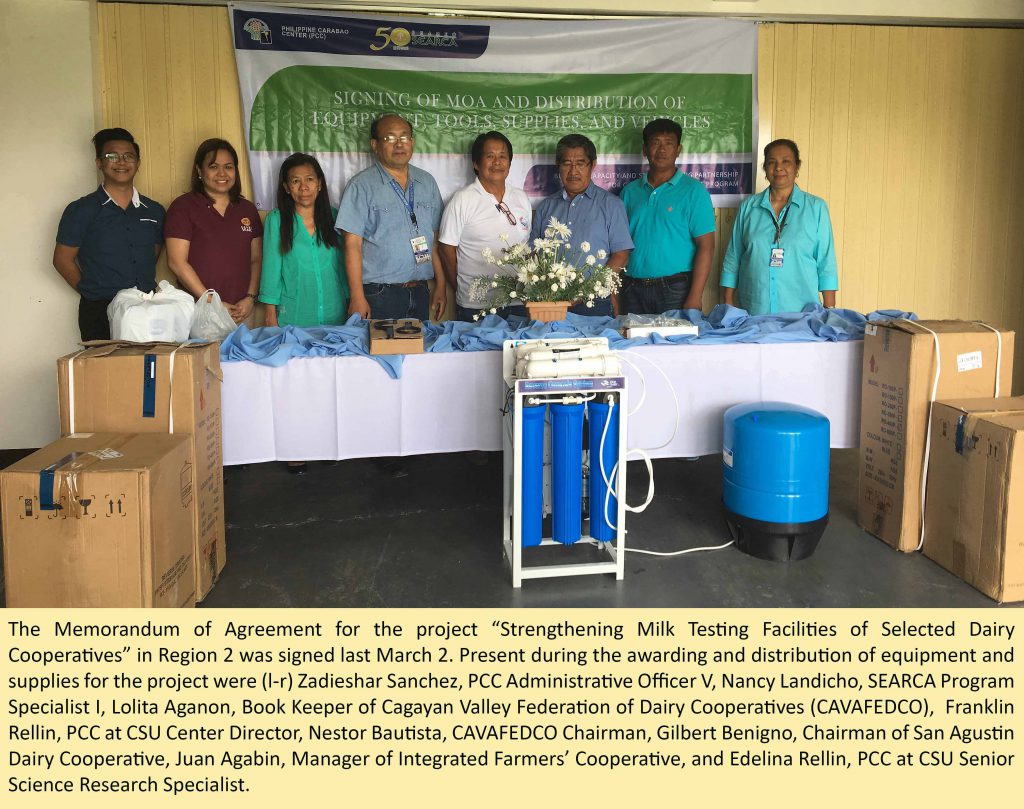In the production of carabao and carabao-based products up to the marketing aspects, who gets the least benefits?
Mostly those in the production site, who are the farmers and the producers, studies revealed.
“They are the identified weaker players,” results of the studies on the Value Chain Analysis (VCA) said.
The study, according to Zadieshar Sanchez, Administrative Officer V of the Philippine Carabao Center (PCC), was conducted in Luzon in Nueva Ecija, which is the designated National Impact Zone for carabao industry, in La Union (Region 1), Cagayan Valley (Region 2), Central Luzon (Region 3) and CALABARZON (Region 4a).
Sanchez said the study was part of a commissioned research project of PCC in collaboration with the Southeast Asian Regional Center for Graduate Study and Research in Agriculture. It was led by World Bank consultant Dr. Flordeliza Lantican, a renowned agricultural economist with distinct specialization in agricultural marketing and price analysis.
The study was meant, eventually, to identify those that need intervention the most in the value chain.
Those in the distribution side get the higher incomes than those on the production side, the study indicated.
“The VCA project helped in identifying the constraints and opportunities faced by the value chain players from the producing sector up to the marketing sector,” Sanchez explained.
“It also endeavored to help find ways toward achieving inclusiveness in the value-addition activities along the chain,” he added.
Provision of interventions
Corollary to the research results, each of the cooperatives and associations involved in the study, thru the help of the PCC regional center chiefs and carabao-based enterprise development (CBED) coordinators, submitted one project proposal indicating the interventions needed.
They, however, underwent capability building in a series of trainings before asking to package their respective proposals and to become ready for the implementation of their respective projects.
Subsequent developments proved beneficial for the proponents of the proposals.
“Upon thorough evaluation of five proposed projects and on-site validation of their readiness to receive such interventions, the projects have been approved for funding under the PCC-SEARCA project,” Sanchez said.
A total of 12 groups, composed of 10 cooperatives/associations and two federations in Luzon, eventually received the interventions needed.
The signing of the Memorandum of Agreement (MOA) for the project in Region 1 titled, “Enhancing the Carabao-based Enterprise (CBE) Partners’ Capability in Sustaining Animal Feed Supply through Proper Farm Waste Utilization” was held last February 16 with PCC at Don Mariano Marcos Memorial State University (PCC@DMMMSU) as the lead proponent.
The cooperatives and associations involved in the project are the Bantog Samahang Nayon Multi-Purpose Cooperative, Rosario Dairy Producers’ Association, and Organic Pares-Pares Multi-Purpose Cooperative. They received one unit of motorcycle with two-side car (kolong-kolong), three pieces of forage cutter, and 2,000 plastic bags with a 50-kg capacity each.
The MOA signing for the projects in Region 3, on the other hand, happened last February 23 and 24, respectively.
The Nueva Ecija Federation of Dairy Carabao Cooperatives in Region 3 received one unit of stainless milk cooling tank as proposed in the project.
In addition, the Malibay Aggressive Cooperative, Lambakin Agricultural Producers Cooperative, and Labne Producers’ Cooperative received interventions in their proposals. Their proposal, packaged by the PCC at Central Luzon State University, was titled, “Strengthening the CBED Partners’ Capability: Introduction of a Systematic and Hygienic Collection and Storage of Buffalo Milk in San Miguel Bulacan”.
They received one unit of motorcycle with two-side car (kolong-kolong), one unit of mobile milking machine, two-bucket milking machine with lines, 300-L capacity milk cooling tank, two stainless cans and two pails.
Last March 2, the MOA for the project “Strengthening Milk Testing Facilities of Selected Dairy Cooperatives” in Region 2 was signed. Assisted by PCC at Cagayan State University, the beneficiaries are the Integrated Farmers’ Cooperative, San Agustin Dairy Cooperative, Namnama Multi-Purpose Cooperative, and Cagayan Valley Federation of Dairy Cooperatives.
They received one unit of Porta SCC reader, one unit of water bath, three units of water distiller, three units of ecofat analyser, six pieces of lactometer with thermometer, three pieces of hand held pH meter, anti-biotic test kit, three packs of test strips, three packs of glass test tubes, and three packs of plastic test tubes, and others.
Those in Region 4A will receive theirs before the end of March this year.
The MOA was signed by PCC, SEARCA, chairman and vice chairman of coop-beneficiaries.
“The pieces of equipment are for the supply side in the value chain, which means they are either in the area of producing forage for their carabaos or milking their carabaos,” Sanchez said. “After one year, the team will conduct an economic impact analysis to assess how the beneficiaries’ income and profitability have improved,” he added.
Sanchez underscored that due to this value chain study approach, the weaker sector in the chain was identified and their preparedness and firmness to receive interventions were ascertained.
The project team is currently evaluating project proposals from the Visayas and Mindanao areas for possible funding of the needed interventions under the PCC-SEARCA project.

